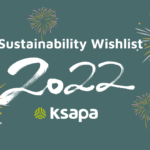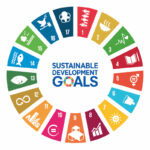At COP 26, the IFRS Foundation officially launched the creation of the ISSB. This is a major event that gives a new American dynamic to a process of consolidation of ESG standards. The latter seems to anchore itself more around the efforts led by the European Commission. Indeed, the EU commission implements the financial and ESG accounting standards carried by the CSRD. Many acronyms that hide major issues that need to be decrypted.
ISSB and CSRD – What are we referring to?
Understanding the ISSB (International Sustainability Standards Board)
The IFRS that supports the ISSB enjoys a high level of legitimacy in the accounting and financial communities
The IFRS (International financial reporting standards), established in 2021 its own committee for sustainability standards. They could then create their own ESG benchmark. This committee is the ISSB (International Sustainability Standards Board). The IFRS is a private international initiative based in the United States. All accounting and financial actors operating at an international level are familiar with the various “IFRS” standards. These are international financial reporting standards designed to standardize the presentation of accounting data exchanged at the international level.
IFRS accounting standards are coming from the International Accounting Standards Board (IASB). Although some standards labelled IAS (International Accounting Standards) may still exist, the IFRS standards published by the IASB have essentially become the norm since 2005. However, we shouldn’t neglect the fact it isn’t a small and neutral detail in financial standardization. Indeed, the IFRS’s headquater is in the State of Delaware. However, this state itself offers financial and accounting margins similar to what can be found in the Cayman Islands. The IASB was created in a context of the early 2000s when certain financial scandals had highlighted the lack of transparency of the information available to the private investor. Thanks to those scandals, investors could harmonize accounting reports at the international level. It therefore allows them to determine the financial situation of a company.
IFRS are not “North American” standards. Since 2002, companies in the European Union that go public have been obliged to present their financial reports using IFRS. This obligation is at destination of listed companies and large international groups that must comply with IFRS/IAS. This is not mandatory for other companies. SMEs can also comply with them on the basis of a simplified standard called “IFRS private entities” or “IFRS SME”. The IFRS has thus obviously a very great legitimacy in the accounting and financial world:
- an accounting and financial public already accustomed to IFRS principles,
- a public that is led to reinforce itself directly on ESG issues,
- an experience of having succeeded in standardizing accounting and financial subjects. It was not necessarily easy in the early 2000s,
IFRS has managed to bring together a credible ecosystem to standardize ESG
Of course, the fact remains that the legitimacy and history of the IFRS accounting and financial standard does not give it any particular legitimacy or expertise to grasp the reality of the issues and extra-financial standardization carried by ESG. This is where the composition of the ISSB comes into its own. During the COP 26 in November 2021, they announced that the ISSB’s organization will be a committee. It will bring together the joint forces of the CDSB (Climate Disclosure Standards Board) and the VRF (Value Reporting Foundation).
- CDSB is itself the result of a coalition of organizations (ILO, CDP, WBCSD, WRI, SASB, Ceres, Climate Group, IETA…). They all aim to standardize the integration of information concerning climate issues in financial reporting
- VRF is nothing other than the alliance, in June 2021, of two initiatives that have been working on the harmonization of non-financial information for the past decade. It’s the IIRC (International Integrated Reporting Council) and SASB (Sustainability Accounting Standards Board). The IIRC is exploring the appropriate ways to integrate ESG data into financial reporting. Providing ESG information to financial and accounting actors in the United States is the mission of the SASB. The institution is structing tools in order to help prioritize the extrafinancial issues of the economic sector.
Thus, when the IFRS organizes an ISSB by associating the CDSB with the VRF, we can say that we have a major international initiative. It provides itself the means to integrate accounting and financial standardization with non-financial information.
Finally, and perhaps an additional guarantee of the internationalization and credibility of the ESG approach (of the IFRS): the headquarters of its ISSB initiative on ESG reporting will be in Europe, in Frankfurt. Therefore not in Delaware anymore.
Understand the CSRD (Corporate Sustainability Reporting Directive)
The CSRD is first and foremost part of a European political project. This project aims to direct investments towards a more sustainable economy
The CSRD, in line with the SFRD and the European taxonomy, is a key component of the European legislative and regulatory framework. It both serves the European Union’s sustainable development objectives. The CSRD encourages investment – and its transparency – in activities and projects aligned with the European Union’s sustainable development ambitions. It reflects the ambition behind the concept of “dual materiality”. There can be no sustainable financial performance without environmental and social performance. Without forgetting to take into account the constraints that must be associated with it. Thus, in April 2021, the European Commission adopted the proposal for a directive on sustainable development reporting by CSRD companies. This was a significant step forward streamlining the access to quality ESG data. This new CSRD will replace the NFRD from 2023 onward.
CSRD addresses key structural weaknesses in ESG reporting
The CSRD incorporates principles and best practices that some companies have been implementing for years. Among them, the adoption of the double materiality principle, which the SFRD had made mandatory in 2019. It also includes the auditing of ESG data. Leading companies have been auditing their extra-financial information for over 15 years. Finally, it promotes the mobilization of top executives. This is one of the key levers of sustainable corporate performance most cited over the last 25 years.
CSRD should transform corporate sustainability reporting – in at least 5 ways:
- The scope of the CSRD clearly extends to a large number of SMEs. As many as 50,000 companies will now be covered by the sustainability reporting requirements of the CSRD;
- The CSRD encourages ESG reporting at all levels of companies. It includes commercial transactions between investors and issuers and across value chains.
- The new directive drives the digitization of standardized ESG data across the European market. This approach should significantly improve the collection and evaluation of ESG data among investors and asset managers;
- The CSRD will also make the auditing of ESG data mandatory. This process aims to improve the robustness and reliability of extra-financial data, often criticized for their lack of comparability;
- Finally, it takes another step towards integrated reporting. The CSRD requires that management reports combine financial and non-financial information in a single document, addressing mandatory issues.
The European Financial Reporting Advisory Group (EFRAG) is responsible for developing draft standards and thus ensuring the implementation of the new CSRD. EFRAG is a private association established in 2001. With the support of the European Commission, it aims to serve the public interest. Mainly funded by the EU, EFRAG is based on a public-private partnership. Its role is to advise the Commission on the adoption of international financial reporting standards that align well with the legal framework of the European community. At the request of the European Commission, EFRAG has published technical recommendations and a roadmap for the development of European sustainability reporting standards. A crucial expectation is that the EFRAG will develop these standards. the methodology would be to follow due process and seeking expert input from stakeholders.
ISSB/CSRD: initiatives driven by very different philosophies
In the minds of IFRS, accounting information should be “relevant, understandable, reliable and material”. These are principles that any initiative that has been trying to harmonize ESG reporting for 20 years can only agree on. In fact, officially, the two initiatives are not in competition with each other and have committed to cooperate. In any case, the task is huge and any bridge between the two initiatives will obviously be welcome. However, the approaches taken by ISSB and CSRD are very different.
ISSB serves the investor
Indeed, the ISSB states that its corporate reporting standard will meet the needs of investors. It focuses on the financial materiality of ESG and climate risks that could affect investors. Moreover, if we look at the IFRS accounting standards, they lay down principles rather than rules, which gives companies room for flexibility. These principles are the following: the balance sheet approach (priority of the balance sheet over the income statement in concrete terms), the primacy of substance over form, the principle of neutrality, the priority given to the investor’s vision, the important place given to interpretation, and the principle of prudence.
The ISSB remains fundamentally in line with the work of its founders over the last ten years (IFRS, CDSB, SASB, IIRC). Its approach aims to inform investors of their non-financial risks. The future will tell, but “non-financial risks” tend to focus primarily on governance and the environment, which in turn centers on to the climate issue. In any case, the SEC’s recent pronouncements in the United States clearly push for an ESG vision focused on climate change.
CSRD serves the society
CSRD, on the other hand, is primarily driven by a more political project. The European Commission, for its part, aims to highlight the concept of dual materiality, which includes both the financial materiality of ESG risks on company accounts, but also the materiality of the company’s activities on their environment and their ecosystem. If, for example, the climate issue presents a risk for the investor (financial materiality), the double materiality requires checking whether the management of the actual assets is part of a climate trajector (depending on what is needed for society). This is very different, and it is essential to ensure that assets increasingly fuel a real carbon-free economy that lives up to the climate imperative.
The CSRD also takes a much more ambitious approach on the environment beyond climate (water, biodiversity for example) and social considerations. For example, that European taxonomy included respecting the environment as well as Human Rights in its appointed safeguards, both enshrined in the Do No Significant Harm principle.
With that in mind, the EFRAG recently set up 11 working groups with more than 70 experts to advance its framework. The experts appointed by EFRAG come from financial institutions (Danske Bank, Société Générale, etc.), listed and unlisted companies, auditors, employee representatives and academia. These working groups reflect the main expected ESG reporting themes, including the environment, social and governance aspects, but also the specificity of reporting by business sector and for SMEs.
Conclusion
The United States has no desire to see its own capital markets find itself somehow regulated by the European Union. It’s understandable. ISSB thus arises with solid arguments for imposing ESG standardization in the coming years. However, ESG data needs certainly improvement, but has become increasingly complex for 20 years already. And yet, to date, nothing indicates that the better consideration of ESG in investment decisions could have had a significant impact on the global climatic and environmental trajectories still observed in 2021 through the alarming work carried out by COP 15 (biodiversity) and COP 26 (climate). In a context of growing inequalities that make political systems fragile and subject to the vagaries of populist regimes in the next elections.
The CSRD provides interesting answers in the concept of double materiality and in the effort to link environmental performance to social considerations. It allows the investor, ultimately, to ensure that the ESG performance is well calibrated to meet the requirements of science and what is acceptable in society. Dual materiality ensures, for example, that an asset is part of a climate effort that meets what science requires, which is healthy. Social considerations, for example, brought about by the principle of “do no significant harm” make it possible to impose an ESG performance that explores the energy transition from the angle of just transition. This gives credibility to the business plans and the future performance figures of assets to finance.
A graduate of the CERDI School of Economics, Eléa works at Ksapa as an Analyst and Community Coordinator. She is specialised in Development Economics in emerging countries, with a major in Sustainable Development.
With an affinity for international business, she spent two years in Kuala Lumpur as an exchange student where she worked in a consulting firm on CSR topics and business development.
Involved in several social inclusion and environmental projects, Eléa wishes to contribute to the improvement of environmental and ethical practices within the private sector.
She speaks French and English.






